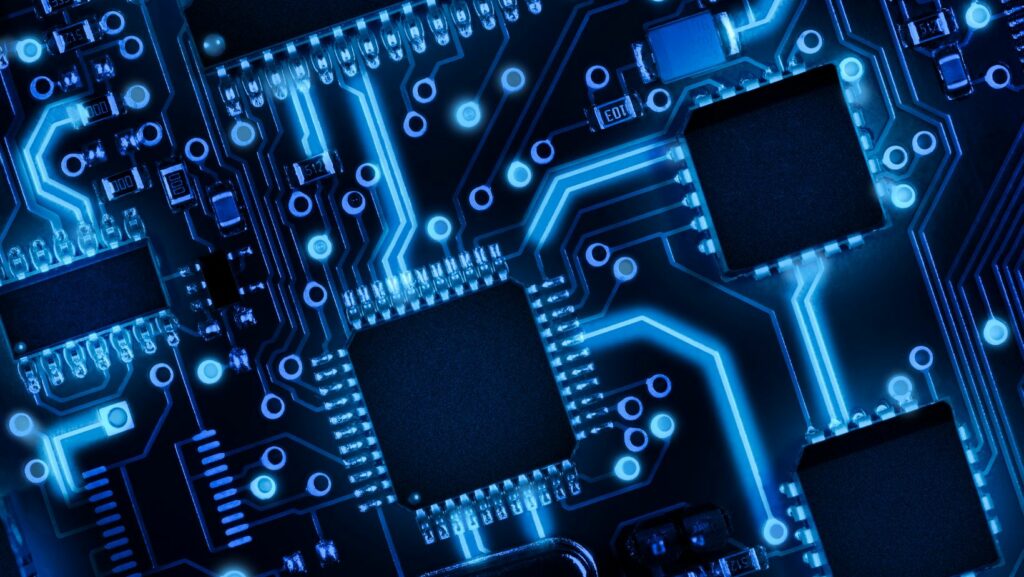Key Takeaways
- Understanding Hi-Tech Systems: Hi-tech systems integrate advanced technologies that revolutionize daily life and enhance efficiency across various sectors, including smart homes and healthcare.
- Key Components: These systems consist of essential software (operating systems, applications, cloud services) and hardware (processors, sensors, networking equipment) that drive their functionality.
- Efficiency and Cost-Effectiveness: By automating routine tasks, hi-tech systems significantly improve productivity and reduce long-term operational costs for businesses and individuals.
- Implementation Challenges: Organizations face integration issues with legacy systems and must address ongoing maintenance requirements to sustain the effectiveness of hi-tech systems.
- Emerging Trends: Key trends shaping the future of hi-tech systems include AI, edge computing, 5G technology, blockchain, AR/VR, sustainable technology, and IoT, all of which enhance connectivity and innovation.
- Investment in Knowledge: Staying informed about hi-tech advancements is crucial for leveraging their benefits and maintaining a competitive edge in an increasingly technology-driven landscape.
In today’s fast-paced world, hi-tech systems are revolutionizing the way we live and work. From smart homes that anticipate our needs to advanced healthcare technologies that save lives, these systems are at the forefront of innovation. They integrate cutting-edge technology with everyday tasks, making life easier and more efficient.
As businesses and individuals embrace these advancements, understanding hi-tech systems becomes essential. These technologies not only enhance productivity but also shape the future of various industries. With rapid developments in artificial intelligence, automation, and connectivity, the landscape of hi-tech systems is constantly evolving, offering endless possibilities for growth and improvement.
Hi Tech Systems
Hi-tech systems encompass various advanced technologies that enhance performance, efficiency, and connectivity across multiple sectors. Hi-tech systems, including smart homes, wearable devices, and cutting-edge healthcare solutions, revolutionize everyday activities. For instance, smart home systems automate lighting, security, and climate control, promoting energy efficiency.
Healthcare technologies integrate artificial intelligence and big data analytics, improving diagnosis accuracy and treatment effectiveness. Wearable devices monitor health metrics, enabling users to make informed lifestyle choices. Furthermore, hi-tech systems in industries such as manufacturing and logistics streamline operations through automation and predictive maintenance.
The rise of the Internet of Things (IoT) facilitates enhanced interconnectivity among devices, allowing seamless data sharing. As organizations and individuals increasingly adopt these advanced systems, the demand for skilled professionals grows. Understanding hi-tech systems is essential for leveraging their benefits and participating in the ongoing technological evolution.
Key Components of Hi Tech Systems
Hi-tech systems comprise essential elements in both software and hardware that drive their functionality and effectiveness. Understanding these components enhances insight into the operations of modern technologies.
Software
 Software forms the backbone of hi-tech systems, executing commands, processing data, and enabling user interactions. Key software types include:
Software forms the backbone of hi-tech systems, executing commands, processing data, and enabling user interactions. Key software types include:
- Operating Systems: Provide the foundational framework for managing hardware resources.
- Applications: Serve specific purposes, such as mobile apps for personal use or enterprise software for business operations.
- Middleware: Facilitates communication between different software applications, ensuring seamless data exchanges.
- Cloud Services: Enable data storage and processing over the internet, allowing for scalable solutions across various devices.
Hardware
Hardware constitutes the physical components of hi-tech systems, influencing performance, durability, and efficiency. Significant hardware components encompass:
- Processors: Handle computational tasks, with multi-core processors enhancing parallel processing capabilities.
- Sensors: Collect data from the environment, crucial for smart devices and IoT applications.
- Networking Equipment: Includes routers and switches that enable data transmission and connectivity.
- User Interface Devices: Such as touchscreens and voice recognition systems that enhance user experience.
Understanding these key components highlights how hi-tech systems utilize both software and hardware to revolutionize daily activities and industry operations.
Benefits of Hi Tech Systems
Hi-tech systems provide numerous advantages that enhance productivity and operational capabilities. They streamline processes while driving innovation across various sectors.
Efficiency
Efficiency is a primary benefit of hi-tech systems. These systems automate routine tasks, reducing the time employees spend on manual processes. For instance, smart manufacturing systems employ robotics and automation to maintain productivity with minimal human intervention. Inventory management systems use real-time data analytics to optimize stock levels, ensuring timely replenishment and reducing waste. Additionally, advanced scheduling software enhances resource allocation, leading to better project management outcomes and increased overall productivity.
Cost-Effectiveness
Cost-effectiveness emerges as another significant benefit of hi-tech systems. Initial investments in technology often reduce long-term operational costs. For example, cloud computing services minimize the need for extensive IT infrastructure, lowering maintenance expenses. Automation in workflows reduces labor costs by performing repetitive tasks without human involvement. Furthermore, predictive analytics enables businesses to anticipate maintenance needs, preventing costly downtime and repairs. Overall, the integration of hi-tech systems leads to substantial savings while enhancing operational efficiency.
Challenges in Implementing Hi Tech Systems
Implementing hi-tech systems presents several challenges that organizations must navigate to fully leverage their benefits. Two major areas of concern include integration issues and maintenance requirements.
Integration Issues
Integration issues often arise when organizations attempt to combine new hi-tech systems with existing infrastructure. Compatibility problems between legacy systems and modern technologies can hinder smooth functioning. Organizations may encounter difficulties in data migration, which affects information flow between systems. Ensuring that various software applications communicate effectively requires careful planning and strategic alignment. Moreover, variations in data formats can complicate data exchanges, leading to potential data loss or corruption. Addressing these integration challenges necessitates investment in middleware solutions that facilitate seamless connectivity across disparate systems.
Maintenance Requirements
 Maintenance requirements play a crucial role in sustaining the effectiveness of hi-tech systems. Regular updates and patches are essential to address security vulnerabilities and enhance system performance. Organizations must allocate resources for continuous monitoring and troubleshooting to preemptively identify potential issues. Additionally, staff training on system upgrades is necessary to ensure that all users possess the knowledge to operate the updated technologies effectively. Failing to meet these maintenance needs can result in decreased system reliability, leading to business disruptions and increased operational costs over time. Developing a comprehensive maintenance strategy is vital for maintaining optimal functionality and prolonging the lifespan of hi-tech systems.
Maintenance requirements play a crucial role in sustaining the effectiveness of hi-tech systems. Regular updates and patches are essential to address security vulnerabilities and enhance system performance. Organizations must allocate resources for continuous monitoring and troubleshooting to preemptively identify potential issues. Additionally, staff training on system upgrades is necessary to ensure that all users possess the knowledge to operate the updated technologies effectively. Failing to meet these maintenance needs can result in decreased system reliability, leading to business disruptions and increased operational costs over time. Developing a comprehensive maintenance strategy is vital for maintaining optimal functionality and prolonging the lifespan of hi-tech systems.
Future Trends in Hi Tech Systems
Emerging trends in hi-tech systems shape the next era of innovation, leading to greater efficiency and connectivity. Key trends include:
- Artificial Intelligence (AI): AI integration enhances decision-making processes across industries. For example, machine learning algorithms analyze vast datasets, providing actionable insights that drive strategic business decisions.
- Edge Computing: This trend shifts data processing closer to the source, reducing latency and bandwidth use. With devices generating massive amounts of data, edge computing optimizes real-time analytics, especially in environments like smart factories or autonomous vehicles.
- 5G Technology: The rollout of 5G networks enables faster data transmission and supports a higher number of connected devices. This connectivity fosters advancements in smart cities, telemedicine, and remote work solutions by providing seamless interactions among devices.
- Blockchain: Utilizing blockchain enhances security and transparency in transactions. Industries such as finance, supply chain, and healthcare leverage blockchain to secure data and validate transactions, fostering trust among stakeholders.
- Augmented Reality (AR) and Virtual Reality (VR): AR and VR technologies create immersive experiences for user training and remote collaboration. For example, manufacturers employ AR to guide technicians through complex assembly processes, increasing efficiency and reducing errors.
- Sustainable Technology: The push for sustainability drives innovations in energy-efficient systems and eco-friendly manufacturing practices. Organizations adopt renewable technologies and smart grids to minimize their environmental impact while enhancing operational efficiency.
- Interconnectivity through IoT: The exponential growth of IoT enables seamless communication between devices, enhancing automation and data exchange. Smart appliances in homes, along with industrial IoT applications, result in improved resource management and process optimization.
Tracking these trends equips organizations and individuals with insights to harness the power of hi-tech systems effectively. Adopting these innovations enhances productivity, reduces costs, and positions stakeholders advantageously in an increasingly competitive landscape.
Tech for Industry Operations
Hi-tech systems are reshaping the landscape of daily life and industry operations. Their ability to enhance efficiency and productivity is undeniable. As technology continues to evolve, staying informed about these advancements becomes crucial for both individuals and organizations.
The integration of artificial intelligence, IoT, and other innovative technologies presents endless possibilities. Embracing these systems not only streamlines processes but also fosters a culture of innovation. Organizations that adapt to these changes will find themselves better positioned to thrive in a competitive environment.
As the future unfolds, the importance of hi-tech systems will only grow. Understanding their components and capabilities will empower users to leverage these technologies effectively and drive sustainable growth.

